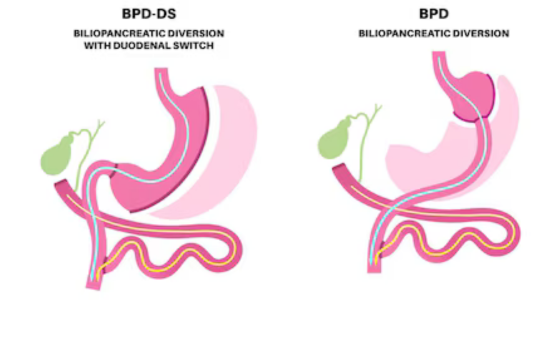Bunion, medically referred to as hallux valgus, are bony bumps that form at the base of the big toe joint. These deformities often develop gradually due to structural foot issues, improper footwear, or genetic predisposition. While mild bunions can often be managed conservatively, there are certain signs and symptoms that indicate the condition has progressed to a point where surgical correction is necessary.
While many people manage bunions with simple lifestyle changes, such as wearing roomier shoes or using protective padding, these methods often only offer temporary relief. In more advanced cases, the deformity can interfere with walking, daily activities, and even sleep, despite all conservative efforts. This is when surgery may become a necessary solution not only to relieve chronic pain but also to restore normal foot structure and function.
What Is Bunion Surgery?
A bunion is more than just a bump on your foot. It is a misalignment of the big toe joint that gradually worsens over time. The big toe begins to lean towards the second toe, causing the joint to protrude outward. This misalignment leads to pressure, inflammation, and pain that can eventually interfere with your mobility and quality of life.
Bunions are commonly caused by wearing tight or narrow shoes, inherited structural defects, arthritis, or foot injuries. While they can affect anyone, they are more commonly seen in women and older adults.
When Conservative Treatments Aren’t Enough?
In the early stages, bunions can often be managed through non-surgical approaches. These include wearing wider shoes, using orthotic devices, applying ice, taking pain relievers, and doing foot exercises. However, these methods primarily aim to relieve discomfort and slow progression they cannot reverse the bunion.
If your bunion continues to worsen despite these treatments, or if it significantly interferes with your day-to-day activities, it may be time to consider surgery. Understanding the symptoms that point toward surgical intervention is key to preventing long-term complications.
Major Symptoms of Bunion Surgery
Let’s explore the specific symptoms that commonly signal the need for surgical intervention. Recognizing these signs early can help you consult a podiatric surgeon before the deformity progresses further.
-
Persistent Pain in the Big Toe Joint :- One of the most obvious signs that surgery might be necessary is chronic pain in the area of the bunion. This pain typically does not go away with rest, footwear changes, or anti-inflammatory medications. It may become more pronounced when walking, standing for long periods, or even during sleep.
When pain is persistent and impacts your quality of life, it could mean the bunion has progressed beyond conservative management.
-
Limited Movement of the Big Toe :- Over time, a bunion can stiffen the metatarsophalangeal (MTP) joint, making it harder to move your big toe. If you find it difficult to bend or straighten your toe, or if you experience joint locking, it may indicate severe joint damage or arthritis.
Limited motion can make walking uncomfortable and may require surgical correction to restore mobility and realign the joint.
-
Foot Deformity or Disfigurement :- As bunions worsen, the visible bump becomes more pronounced, and your toe may start overlapping or underlapping the second toe. This deformity can alter the entire shape of your foot, making it harder to find comfortable shoes and leading to problems like hammertoes or calluses.
Surgery is often recommended when the deformity progresses to the point of affecting foot alignment and balance.
- Inflammation and Swelling That Doesn’t Subside :- Bunions can cause chronic inflammation of the bursa, a fluid-filled sac that cushions the joint. If redness, swelling, and tenderness persist despite using ice, anti-inflammatory medications, or supportive footwear, it may indicate that the joint damage is severe enough to warrant surgical correction.
- Difficulty Wearing Shoes or Finding Proper Footwear :- When a bunion becomes so large or painful that it prevents you from wearing normal shoes, it significantly disrupts your lifestyle. If you are forced to wear only sandals or open-toed shoes due to discomfort, it’s a strong indication that surgery may be necessary to restore foot function.
- Numbness or Tingling in the Toes :- Although less common, some individuals experience numbness, tingling, or a burning sensation around the bunion. This could be due to nerve irritation caused by the misalignment and pressure in the foot. These neurological symptoms, especially when paired with deformity and pain, often indicate advanced disease that may require surgical correction.
- Recurring Corns or Calluses :- When the big toe pushes against the second toe, it can lead to friction and pressure that causes calluses or corns to form on the toes or foot. If these issues keep coming back despite using protective pads or shoe inserts, it may mean that the underlying bunion needs surgical correction to resolve the problem permanently.
How Bunion Surgery Helps?
Bunion surgery, also known as a bunionectomy, involves removing the bony bump and realigning the joint to its correct position. The type of procedure varies depending on the severity of the bunion and the presence of joint damage. Surgery not only relieves pain but also restores normal alignment and function, allowing patients to walk comfortably again.
Most patients report a significant reduction in symptoms and an improved quality of life after surgery. Recovery typically involves a period of rest, followed by gradual physical therapy to regain strength and mobility in the foot.
When to See a Specialist?
If you are experiencing any of the above symptoms, it’s important to consult a foot and ankle specialist or a podiatric surgeon. Early diagnosis can make a significant difference in the type of treatment needed. A specialist will evaluate the extent of the deformity using physical examination and imaging tests like X-rays, and recommend the most appropriate treatment plan for you.
Delaying treatment can lead to worsening symptoms, further deformity, and the development of secondary foot problems that may require more complex surgery later.
Conclusion
Bunion symptoms can range from mild discomfort to severe deformity and chronic pain. While early stage bunions may respond to conservative measures, persistent or worsening symptoms often indicate the need for surgical correction. Key symptoms such as chronic pain, restricted toe movement, visible deformity, and trouble finding comfortable footwear should never be ignored.























